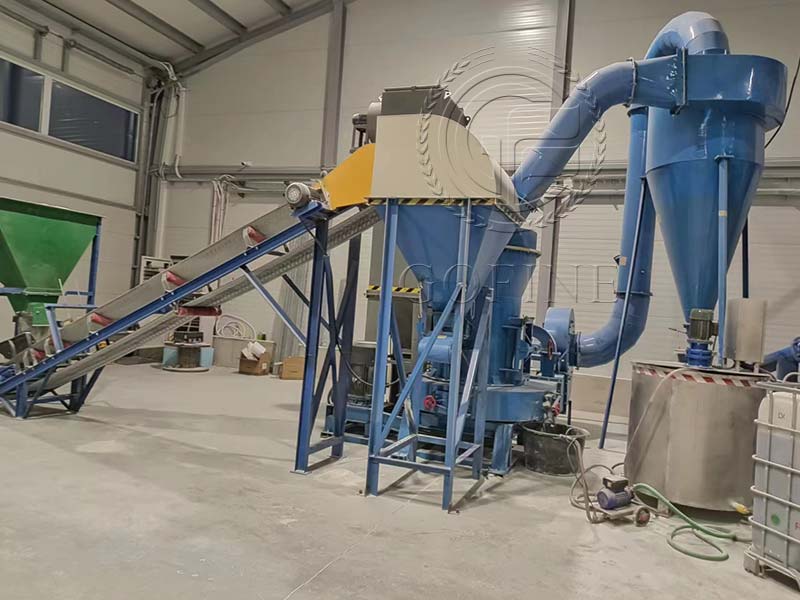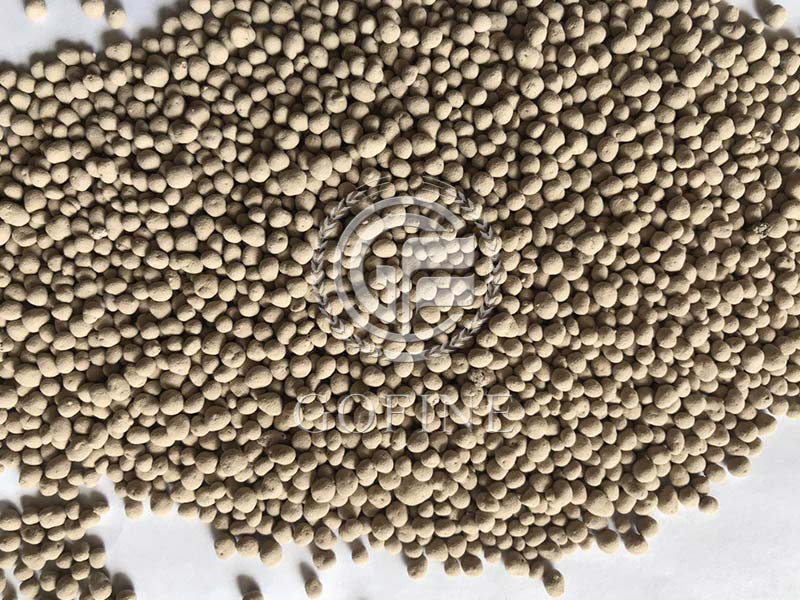Release time:December 6, 2024
Mineral Fertilizer Disc Granulation Production Line Case
I. Overview of the Production Line
Mineral Fertilizer Disc Granulation Production Line is a set of efficient and advanced fertilizer production equipment system, which is specially used to process various mineral fertilizer raw materials into granular fertilizers. The production line combines precise raw material processing, reasonable granulation process and perfect post-processing links, and can produce high-quality and uniformly granulated mineral fertilizer products to provide high-quality fertilizers for agricultural production.

II. Main components
(I) Raw material pretreatment system
Raw material storage warehouse
Equipped with multiple raw material storage warehouses of different specifications, used to store various mineral fertilizer raw materials, such as phosphate rock powder, potassium feldspar powder, trace element ore powder, etc. These warehouses have a solid structure and good sealing performance, which can effectively prevent the raw materials from being damp and contaminated, and ensure the stability of raw material quality.
Raw material conveying equipment
It is mainly composed of belt conveyors and bucket elevators. The belt conveyor can smoothly convey the raw materials in the horizontal direction, and its conveying speed can be flexibly adjusted according to production needs. Bucket elevators are responsible for lifting raw materials vertically from low places to higher production links, such as batching bins or crushing equipment, to ensure the continuous supply of raw materials.
Raw material crushing equipment
When the raw material particle size does not meet the granulation requirements, it needs to be processed by crushing equipment. Common ones are hammer mills or air flow mills. Hammer mills use high-speed rotating hammers to impact and shear the raw materials and crush them into fine powder; air flow mills use high-speed airflow to make the raw material particles collide with each other and crush them, which is suitable for raw materials with high fineness requirements.
(II) Batching system
Batching bins
There are multiple batching bins, each of which corresponds to a mineral fertilizer raw material. High-precision metering devices, such as electronic scales or spiral feeders, are installed at the bottom of the batching bin. These metering devices can accurately control the amount of each raw material according to the pre-set mineral fertilizer formula to ensure that the proportion of various mineral components in the fertilizer is accurate.
Automatic batching controller
This is the core component of the batching system, which controls the discharge speed and discharge amount of each batching bin through a computer program. It can automatically adjust the proportion of ingredients according to the requirements of different mineral fertilizer formulas, realize an automated and precise batching process, and ensure the nutrient balance of mineral fertilizers.

(III) Mixing equipment
Horizontal ribbon mixer or double-shaft paddle mixer
The mixer is equipped with a unique stirring device. When the prepared raw materials enter the mixer, the stirring device rotates under the drive of the motor, so that the raw materials move three-dimensionally in the machine body. The ribbon structure of the horizontal ribbon mixer or the paddle structure of the double-shaft paddle mixer can ensure that the various raw materials are fully mixed and evenly mixed. The general mixing time is about 5-10 minutes. The specific time can be adjusted according to the properties of the raw materials and the formula requirements.
(IV) Disc granulation system
Disc granulator
This is the key equipment of the production line. Its working principle is to use the rotating motion of the disc. The mixed raw materials are transported to the rotating disc. As the disc rotates, the raw materials roll on the inner wall of the disc. At the same time, the binder solution is sprayed into the disc through the nozzle, so that the raw materials gradually agglomerate into particles during the rolling process. Parameters such as the inclination angle of the disc, the rotation speed, and the amount of binder sprayed can be adjusted according to the characteristics of the raw materials and the required particle size and strength.
(V) Post-processing system
Drying equipment
Mineral fertilizer particles that have just been granulated contain a certain amount of moisture and need to be dried by drying equipment. Commonly used drying equipment includes rotary dryers or fluidized bed dryers. The rotary dryer uses a hot air circulation system to send hot air into the dryer, which is fully in contact with the particles to evaporate the moisture; the fluidized bed dryer uses hot air to suspend and dry the particles, and has high drying efficiency.
Cooling equipment
The temperature of the particles after drying is relatively high and needs to be cooled by cooling equipment. Usually, an air-cooled cooler is used to blow cold air into the cooler through a fan to quickly reduce the temperature of the particles and restore them to normal temperature, preventing the particles from agglomerating during storage.
Screening equipment
It is used to screen out particles that do not meet the specifications, such as particles that are too large, too small, or irregular in shape. Qualified particles are transported to the finished product packaging area, and unqualified particles are returned for reprocessing. Screening equipment generally uses a vibrating screen, and its screen aperture can be changed according to the size requirements of the particles.

III. Production process
Mineral fertilizer raw materials are transported from the storage warehouse to the raw material pretreatment system through conveying equipment for pretreatment such as crushing.
The pretreated raw materials enter the batching system and are accurately batched according to the set formula.
The prepared raw materials are fully mixed in the mixing equipment.
The mixed raw materials enter the disc granulator and are granulated under the action of the binder.
The granulated particles are dried, cooled and screened in turn. Qualified finished products are packaged and unqualified particles are returned for reprocessing.
IV. Product advantages
Excellent particle quality
The mineral fertilizer particles produced by the disc granulation production line are uniform in size, smooth in surface, moderate in hardness, with good fluidity and anti-caking properties, which are conducive to the storage, transportation and mechanized fertilization of fertilizers.
Uniform nutrients
Through precise batching and sufficient mixing, the distribution of mineral components in each granular fertilizer is guaranteed to be uniform, which can provide a balanced nutrient supply for crops and improve the fertilization effect.
High production efficiency
The entire production line has a high degree of automation, and each link is closely coordinated, which can achieve continuous and stable production, greatly improve the production efficiency of mineral fertilizers, and is suitable for large-scale production.
Flexible and diverse formulas
The batching system can accurately control the proportion of various raw materials, and can produce a variety of mineral fertilizers according to the needs of different crops, soil conditions, etc., to meet the diverse needs of agricultural production.
Environmental protection and energy saving
The production line has adopted a series of environmental protection measures in the process of raw material processing, granulation and post-processing, such as dust collection devices and tail gas treatment systems, to reduce pollution to the environment. At the same time, the optimized design of the equipment also helps to reduce energy consumption.